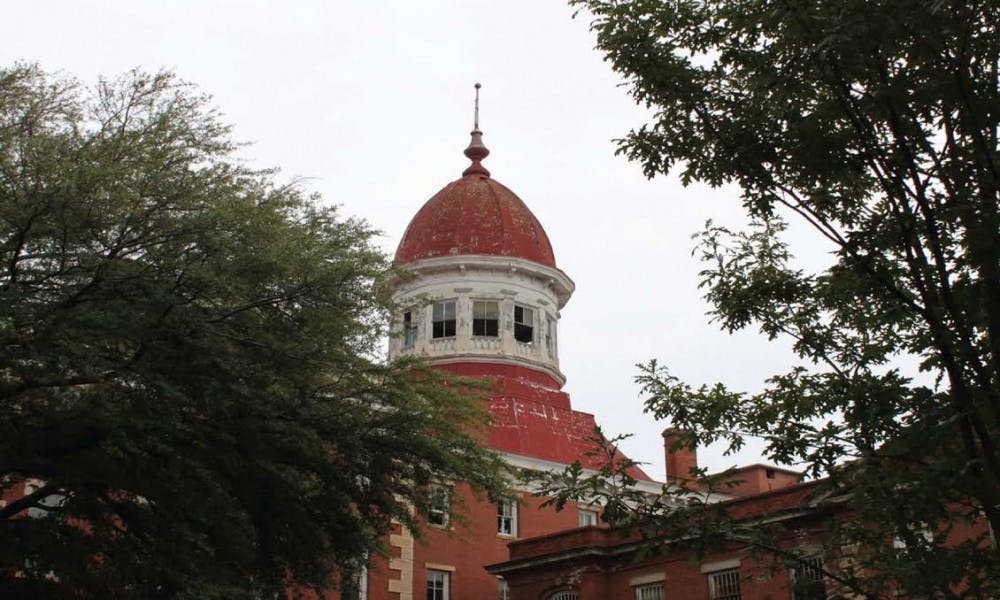Curator focuses on stories of medical staff to promote preservation
The McKissick Museum’s “Bull Street: Forgotten Past and Uncertain Future” exhibit commemorates the abandoned, 181-acre state mental hospital on Bull Street, which is currently at the mercy of developers, politicians and preservationists fighting over what should be demolished and what should be built.
The exhibit is a fascinating and unsettling look at the treatment of the mentally ill in the 19th and 20th centuries.
In one corner of the room, a wire mannequin trapped in a straightjacket watches over a display case containing the dilapidated control board for an electrotherapy machine, an “enema can” and a strange contraption with tubes stemming from a jar labeled “suction.” There’s furniture, plaques, keys and postcards written from patients to family members chronicling their involuntary stays at an often overcrowded and under-maintained asylum.
Lana Burgess, faculty curator and director of USC’s museum management program, said she arranged the exhibit to gain support for the protection of the site.
“We want to get more people looking at it as historically significant, to get the community interested in preserving these buildings,” she said.
The exhibit is largely devoted to the asylum’s faculty. Doctors and nurses — even janitors and laundrymen — are memorialized in paintings and photos.
What can’t be found (save for a few blank-faced, wide-eyed photos) are the remnants of the patients, many of whom suffered at the hands of their staff.
Burgess said this is partly because of the federal law that prevents access to the patients’ medical information. It’s also because the staff’s side of the story hasn’t been told.
“Most people focus on the patients, thinking ‘Silence of the Lambs’ or ‘American Horror Story,’” she said. “Other people that lived there deserve to have their stories told too.”
Though not without its flaws, the asylum was still considered progressive for its time. Burgess says the design of some buildings followed the Kirkbride Plan, a system of architecture that allows each wing to receive sunlight. Others have cupolas — dome-like structures that provide ventilation.
According to Burgess, the staff was constantly looking to improve the quality of life for patients.
“It was progressive in that they would always explore new options, like occupational therapy. Patients would work on farms, go to church. They gave them some semblance of a normal life,” she said.
Nevertheless, the walls of the exhibit tell tales of poor administration leaving doctors and nurses without proper medicine and equipment. Racism and sexism made conditions horrid for some patients: African-Americans crammed in buildings that were falling apart, women kept in basements that constantly flooded. They were grim contrasts to the progressive goals of the hospital.
“There’s definitely a contradiction, but there’s treatment, and there’s reality, which is not the same,” Burgess said. “They were still lingering from the Civil War.”
Despite the racism and sexism that existed at the time, she said, the state mental hospital on Bull Street was a beacon that marked improvements in how the mentally ill were treated, and it was among the first to treat them like humans.

